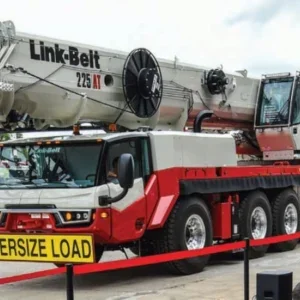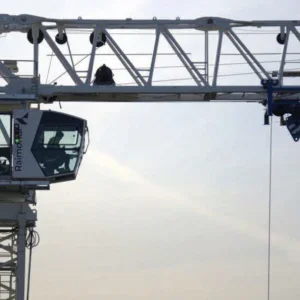The Roborigger was developed by engineering solutions provider Tensa Equipment. The company said it is the first of its kind to be used on a commercial construction site and that it significantly improves worksite safety by allowing riggers and dogmen to control loads wirelessly from a safe distance.
The Roborigger device uses inertial forces to accurately rotate and orient crane loads, eliminating the need for workers to use taglines or to be in close proximity to the load during the lifting and lowering phases.
It features an in-built camera and load cell. Using Internet of Things (IoT) connectivity, it incorporates a slimline tracking system so every piece of data on a lift, including an image of the load, weight, location, time and date, and the unit status, can be viewed online in real-time.
Multiplex is the first commercial construction contractor to use this wireless load bearing technology. According to Multiplex, the company was quick to recognise Roborigger’s potential to be a game-changer for safety in many industries.
“At Multiplex, we are always looking to find ways of making our sites and day-today operations safer, so it’s been a great opportunity to partner with Tensa in the research and development of Roborigger,” said John Flecker, chief executive officer at Multiplex.
According to Flecker, “the overwhelming potential safety outcomes are what sparked our interest in Roborigger. The device perfectly aligns with our overarching strategy to be safer by design and focus on critical risks, removing the need for workers to be in the proximity of a high risk activity.”
Tensa has been developing the Roborigger technology since 2016 and Multiplex has supported this as an industry partner since 2017, coordinating Roborigger trials on commercial sites and providing user feedback.
“It’s exciting to see Roborigger in action, with the initial trial meeting all of our expectations. We’ve already expanded the trial to other sites in Western Australia, with plans to roll out Roborigger on a number of Multiplex sites nationally,” said Flecker.
According to Tensa managing director Derick Markwell, Tensa initially developed the technology to address the challenging task of installing wind turbine blades when the wind was greater than the current limit of 12 knots.
“As we spoke to more people in the industry we realised that safety was the key concern,” Markwell said.
“We have also recently realised that data captured from load lifts is as valuable as the hardware itself, so we are now looking at leveraging this.”
Roborigger has been a completely local Western Australian innovation with the key research, development and trial phases all carried out locally and supported by local stakeholders such as Multiplex.
Tensa has also been collaborating closely with Curtin University researchers, who developed the bespoke algorithm for Roborigger control.
Tensa is currently taking Roborigger to the next commercialisation stage, having set up a production facility in Wangara where it is underway to build 39 Roborigger units this year.






